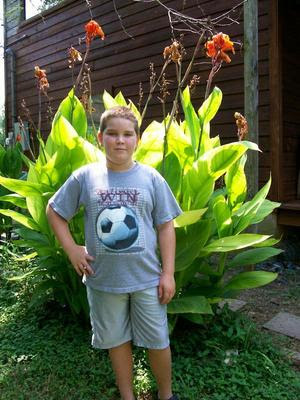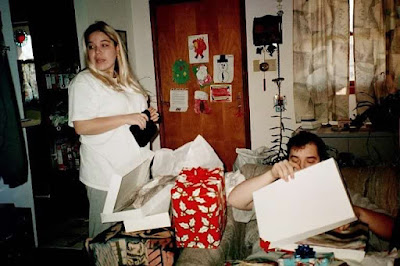June is International Cavernous Angioma Awareness Month. Cavernous Angioma, are also known as Cerebral Cavernous Malformations, or CCM. The different names reflect the ongoing understanding and classification of these mulberry-shaped abnormal blood vessel with thin, leaky walls that occur most often on the brain and spine, however they also occur on other parts of the body. CCMs in the brain can cause seizures, strokes, headaches, burning in the arms and legs and other neurological problems which can lead to potentially life-threatening complications. Unfortunately there is no medication to treat the condition and surgery is the only option. The biggest issue is that people are most often misdiagnosed.
Some of the most common misdiagnoses for Cavernous Angiomas are:
- Brain Tumors
- Stroke
- Epilepsy
- Multiple Sclerosis
Through research and advocacy efforts, the Alliance to Cure Cavernous Malformation is working to improve the lives of individuals affected by CCMs and ultimately find a cure.
- CCM1 depletes Vitamin D over time, which can impact muscle and bone strength. All patients with CCM1 should take a vitamin D supplement.
- There is a connection between gut bacteria and an increased formation of lesions and bleeds. This connection appears strongest with foods that contain emulsifiers, ingredients like soy lecithin, carrageenan, polysorbate and others that help liquids combine in processed foods.
- Antibiotics that treat gram-positive bacteria also play a role. A reduction in gram positive bacteria in the gut allows the proliferation of gram-negative bacteria. The excess growth of gram-negative bacteria leads to a “leaky” gut and inflammation that can lead to the formation of more lesions. Antibiotics that treat gram-positive infections should be taken for the minimum time necessary.
Cerebral Cavernous Malformations are broken down in into 3 groups:
(KRIT1)CCM1
CCM2
(PDCD10) CCM3
It's considered a rare disease, not because it is rare to have this condition but it is rare to be correctly diagnosed. Actually about 1 in 200 people are affected by Cerebral Cavernous Malformations. I personally have tried to speak to all of my general practitioners and neurologists over the years and it is rare to find a doctor who is familiar with the disease.
Cavernous Malformations are hereditary in about 20% of people who have the illness. These are known as Familial Cerebral Cavernous Malformation or FCCM. They are caused by a gene mutation and passed down from generation to generation. The hereditary form of FCCM does not skip generations and each child of an affected person has a 50/50 chance of inheriting the illness. Those who have inherited FCCM usually have multiple Cavernous Malformations throughout their lives that get worse with age.
The CCM1 gene mutation is so prevalent among descendants of early Spanish settlers in New Mexico that it's been called the "Common Hispanic Mutation" and it is VERY common in my bloodline. The most common type of FCCM in New Mexico is CCM1, which is caused by a mutation of the KRIT1 gene. Most often found in Hispanic-American families descended from the Baca family. When I first heard of the "Common Hispanic Mutation" it was thought that the only one that was hereditary was CCM1 but today I read that CCM1, CCM2, and CCM3 are hereditary. I am going to have to do some more research.
Clinical trials are underway to evaluate the safety and efficacy of atorvastatin in stabilizing CCMs. Fortunately I already take atorvastatin for my heart condition.
I have written in my blog about this subject more than once over the years because it's a huge part of my every day life not just because the illness itself is very difficult to live with but because I have to spend so much more time and money on my medications and annual tests. I just had my annual CT Scan with dye a couple of months ago. After I had the CT Scan, I woke up in the middle of the night with a sore throat. The next day it got worse, I had a runny nose and I was coughing. Long story short, I did some research to see if this was normal and some people do get flu like symptoms due to the dye but then I realized the symptoms were much worse and I had Covid. As if worrying about a CT Scan result wasn't bad enough.
I have blogged about my journey over the years just to keep track and in hopes that I may find others who have more information than I do. Funny thing is that I was contacted by two doctors, one from the University of Texas El Paso and another from the at the University of Texas Dallas who had obviously found my blog at the same time and realized I had done a lot of research. They both emailed me and asked if I would be interested in being a part of their clinical studies. I declined because of my ongoing issues with my health issues, traveling is not easy for me. For me, driving 15 miles to Austin is a huge ordeal, I can't even imagine going to Dallas or El Paso. Plus, at my age, I wasn't sure that I was up for being part of a clinical study involving the one thing that has made my life way more difficult than the average person my whole life. I would love to donate my body to the cause after I die, but I don't want to make my every day life any harder than it already is.
I was born with a Cavernous Hemangioma on my forehead and until recently, I couldn't find anything that linked the two but it seems that with continued research, they have decided they are the same thing as Cavernous Angioma on a different part of the body. They are both vascular malformations.
I also have an aortic aneurysm on my heart. Here's the difference, aneurysms are formed by a weakness in the wall of an artery. Cavernous angiomas are abnormal clusters of blood vessels, specifically capillaries and veins, creating caverns filled with slow-flowing blood.
Here's a photo of my family on Christmas day 1955 with my mom holding me. You can see the Infantile hemangioma on my forehead. Most infantile hemangiomas grow for a period, then shrink and disappear on their own, often without treatment. Mine eventually turned into a flat pink birthmark on my forehead.
 |
| Fajardo Family - 1955 Gilbert, Nita, Felipe, Phillip Agnes and Christina |
At the age of 15, I had a seizure but I didn't have another one until I was 25 and pregnant. I have been on seizure medication since then. Now, at the age of 70, I have focal seizures on a daily basis that cause various symptoms. It causes me to be highly sensitive to light, sound and temperature. It causes fear, anxiety and general strong emotions for no apparent reason. It causes changes in my heart rate and blood pressure. Now my daughter, Adriane suffers from many of the same symptoms that I have. She was diagnosed with a brain bleed at the New Braunfels hospital and they took her by ambulance to St David's in Austin, but by the time she was seen by a doctor there her brain had stopped bleeding and they told her she had a migraine and sent her on her way.








































































